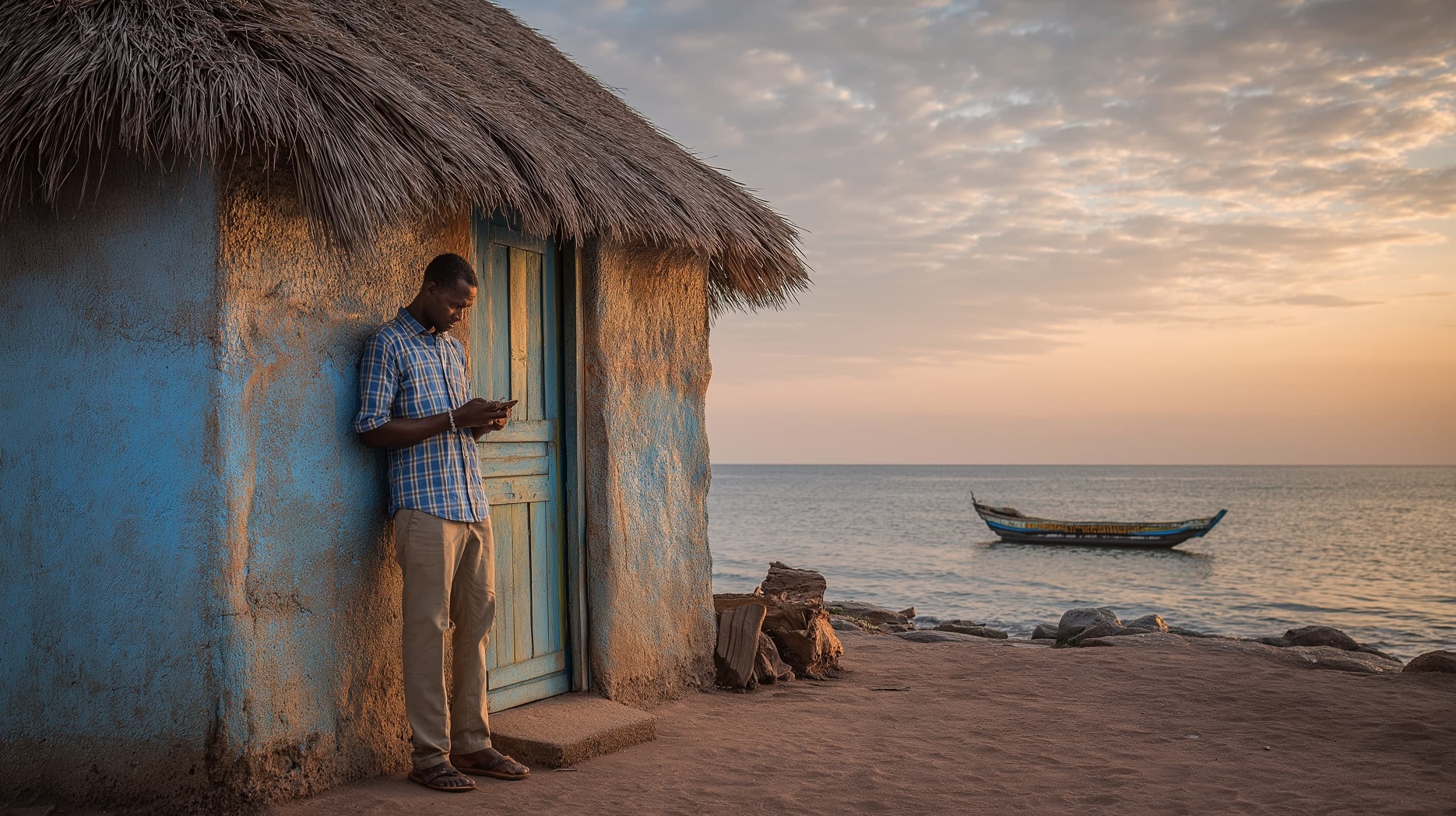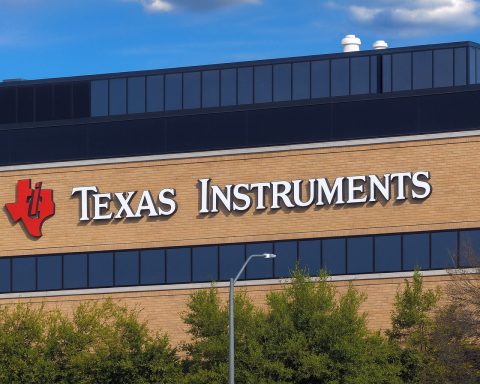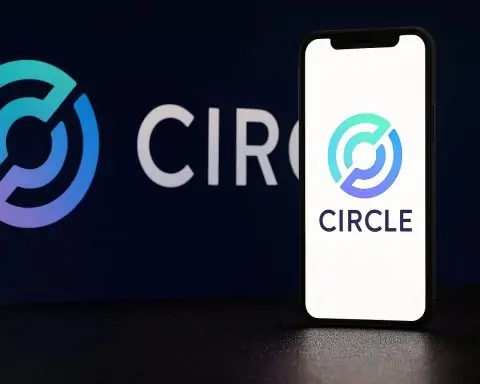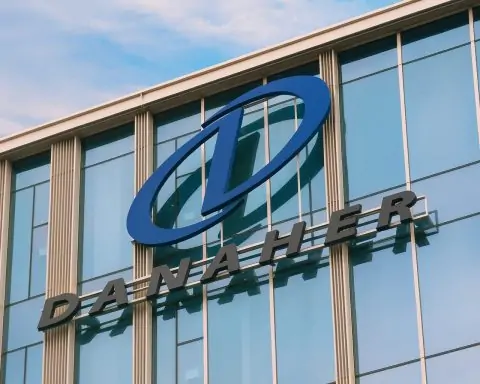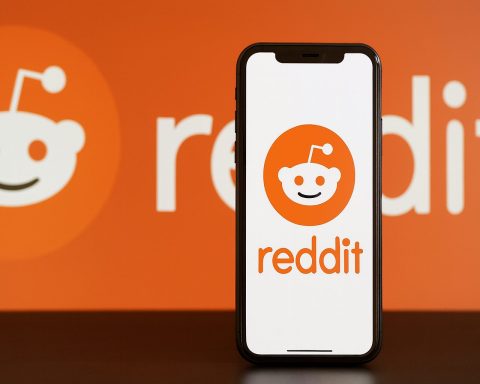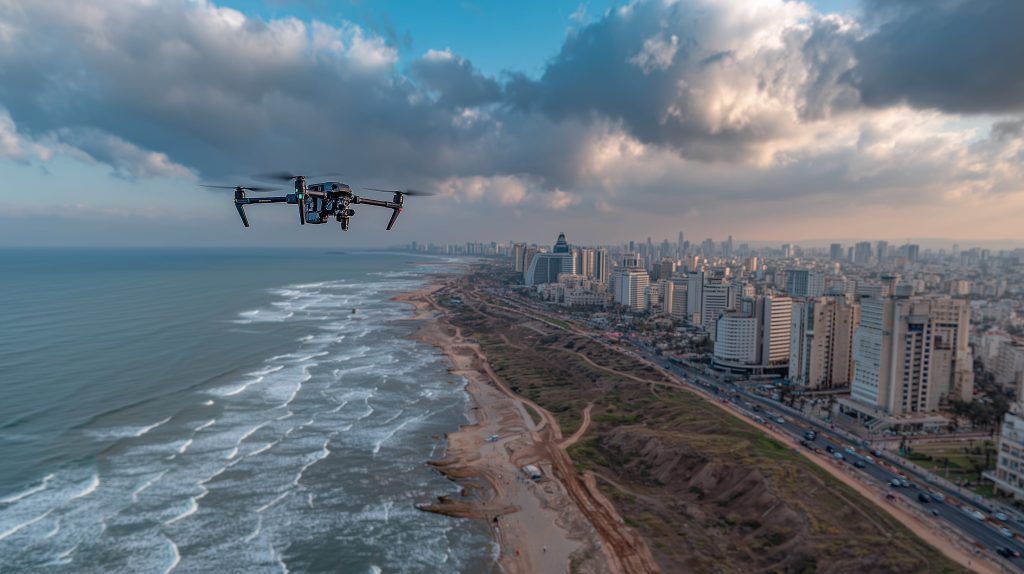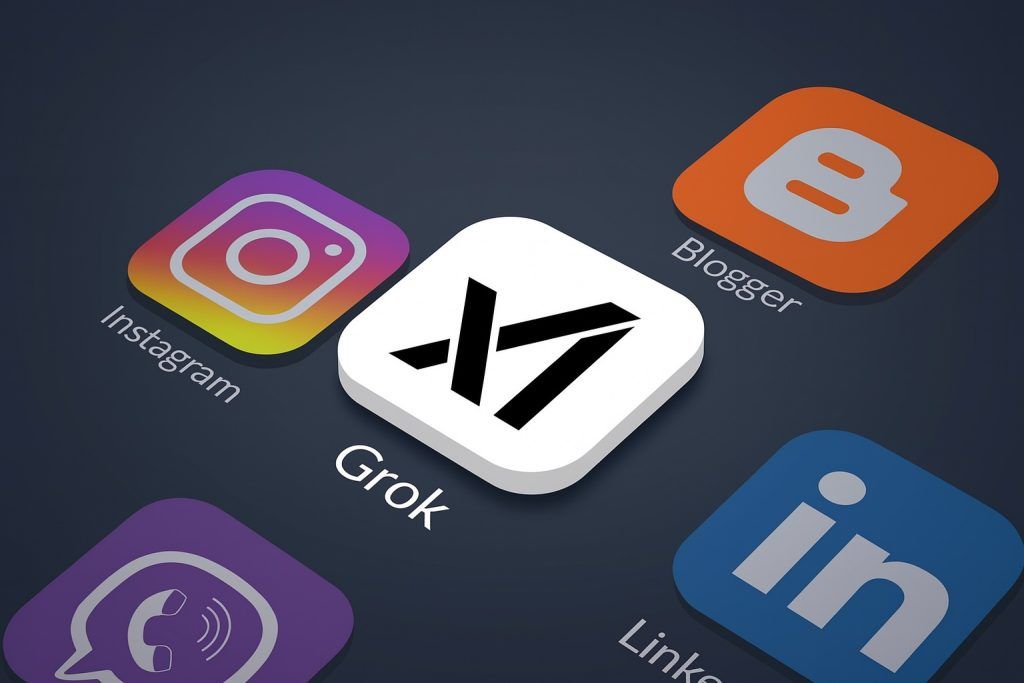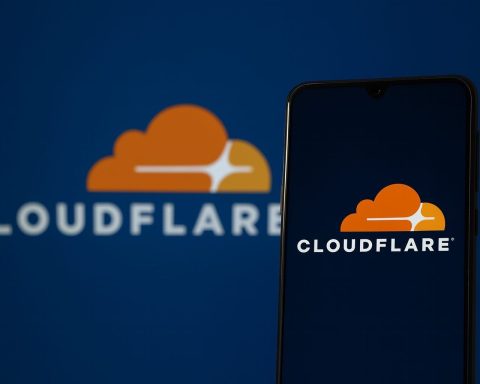- Internet use rose from 2.9% in 2012 to about 32% by January 2024, with 686,200 users then and an estimated 723,000 by January 2025.
- Guinea-Bissau connected to the ACE submarine cable in November 2022 and established its first Internet Exchange Point in Bissau.
- 4G coverage reached about 68% of the population in 2023.
- There was no 5G in Guinea-Bissau as of 2025, with no licenses or pilots announced.
- Mobile subscriptions totaled 2.25 million in early 2024, rising to 2.62 million in 2025 (roughly 120% of the population).
- By 2025, over 1,000 villages that previously had no signal now have at least 2G/3G coverage.
- Starlink launched in Guinea-Bissau in mid-2025 after a provisional license in December 2024 and full approval in April 2025, with a standard kit around FCFA 228,000 ($400) and a FCFA 36,000 ($63) monthly plan.
- The National Digital Transformation Strategy 2025–2030 was launched in January 2025 with UNDP support and Japanese funding, aiming to establish in-country data centers by 2030.
- By 2024, the average cost of a basic mobile internet package fell about 14% from the year before.
- Approximately 99% of Guinea-Bissau’s popular web content is delivered from overseas servers, underscoring the need for local caches and data centers.
Guinea-Bissau is experiencing a digital awakening that few would have predicted a decade ago. Internet usage has exploded from just 2.9% of the population in 2012 to roughly 32% by early 2024 [1]. The arrival of high-speed players like SpaceX’s Starlink promises to further shake up the market [2]. Yet behind the headlines of new 4G towers and satellite broadband, the reality is sobering: connectivity remains unreliable, 67.5% of Bissau-Guineans are still offline [3], and those online pay some of the world’s highest prices for some of the slowest service. This comprehensive report examines the state of internet access in Guinea-Bissau as of 2025, including infrastructure gains, mobile and satellite networks, government digital initiatives, and the daunting challenges of cost and coverage.
Internet Infrastructure and Broadband Penetration
Guinea-Bissau’s core internet infrastructure has advanced in recent years but remains very limited. Fixed broadband is almost nonexistent – effectively 0% of residents have a wired high-speed connection like DSL or cable at home [4]. In 2023 the country had only about 0.31 fixed broadband subscriptions per 100 people, meaning just a few thousand fixed lines in total [5]. Consequently, nearly all internet access is through wireless mobile networks. There were 686,200 internet users in January 2024 (31.6% penetration) [6], rising to an estimated 723,000 users (32.5%) by January 2025 [7] – virtually all getting online via mobile data services on phones.
A major turning point for infrastructure came with the long-awaited connection to an undersea fiber optic cable. In late 2022, Guinea-Bissau finally connected to the Africa Coast to Europe (ACE) submarine cable under the World Bank’s WARCIP program [8]. Until then, the country had been West Africa’s last coastal nation without a direct submarine fiber link [9], relying instead on expensive satellite feeds and cross-border links. The ACE landing, completed in November 2022, also included the setup of the country’s first Internet Exchange Point (IXP) in Bissau [10]. This new international bandwidth was expected to significantly cut internet prices for consumers [11]. Indeed, by 2024 the average monthly cost of a basic mobile internet package fell about 14% from the year prior [12] – a welcome change in a nation where connectivity had been among the most costly in the world relative to incomes.
Despite these gains, Guinea-Bissau’s internet access is still playing catch-up. Overall internet penetration stands around 32% of the population [13], below the 39% African average [14]. And while the capital city and towns now enjoy improved backhaul via fiber, the “last mile” to users is almost entirely wireless. There is no widespread fiber-to-the-home or cable broadband, and the state-run fixed telco’s network reaches few customers. The limited fixed infrastructure contributes to the country’s low e-government and cybersecurity rankings (170th of 193 countries in the UN’s e-Gov Development Index) [15]. For the foreseeable future, mobile networks will continue to carry Guinea-Bissau’s internet growth, supplemented by new satellite options for the hardest-to-reach areas.
Mobile Internet: Coverage, Providers and 4G/5G Status
Mobile telecommunications are the lifeline of Guinea-Bissau’s internet. There are two active mobile network operators (MNOs): Orange Bissau and Telecel (which acquired MTN’s local operations in 2023) [16]. Orange, part of the regional Sonatel group, is the market leader (historically around 55–60% share) and has invested heavily in network upgrades. Telecel, a newer entrant via its takeover of MTN, is working to improve its coverage after MTN’s exit. As of early 2024, the country had 2.25 million mobile subscriptions – more than the population of ~2.2 million (many people use multiple SIMs) [17] [18]. By 2025 this rose further to 2.62 million mobile connections (about 120% of the population) [19]. Clearly, mobile phones are ubiquitous, even if mobile internet use (data connectivity) is constrained by cost and coverage.
Network coverage and technology: Orange launched 3G and 4G/LTE services in the late 2010s, and embarked on a major expansion in 2021 to modernize all sites to 3G+/4G and extend coverage to 1,000 additional villages with 150 new towers [20] [21]. Thanks to such investments, 4G coverage now reaches an estimated 68% of the population as of 2023 [22]. (Other analyses indicate 4G is still limited for many – one source noted only ~32% of people were actually covered by 4G in 2023 [23] – but this likely refers to regular users or those with 4G devices, whereas the signal footprint is broader.) 3G networks cover most populated areas, while 2G/GSM fills in some rural zones for basic voice/SMS. The gap between coverage and usage hints at another issue: many Bissau-Guineans still lack 4G-capable smartphones or stay on 2G/3G plans due to cost, meaning the 4G rollout’s benefits are not yet fully realized on the ground.
Notably, 5G has not yet arrived in Guinea-Bissau. The infrastructure and market are not ready for 5G as of 2025, and operators remain focused on expanding 3G/4G to underserved areas [24]. Even 4G is relatively new – Orange’s upgrade program completed in 2022 and Telecel is likely still extending LTE into former MTN coverage areas. Any consideration of 5G is likely years away, once fundamentals like national fiber backbone, affordable smartphones, and a larger urban user base are in place. (For context, even by 2023 no 5G network was live in the country [25].)
Mobile speeds and reliability: Where 4G is available, mobile internet performance is decent by regional standards. In early 2025, mobile download speeds averaged about 31.9 Mbps in Guinea-Bissau, which is actually higher than many neighboring countries [26]. Users on 3G or poor signal areas get much less, but top 4G speeds in Bissau can support video streaming and other broadband uses. Interestingly, mobile broadband outperforms fixed broadband in the country – fixed-line connections (e.g. ADSL or WiMAX links used by businesses) averaged only ~12 Mbps download [27]. This reflects the lack of fiber to premises: the best internet speeds are delivered over 4G cellular, since there is no cable/FTTH network and the old copper telephone lines are limited. However, network reliability remains a challenge. Both Orange and Telecel rely on fiber backhaul links via Senegal and Guinea-Conakry for international connectivity [28]. When those cross-border fibers or the single ACE cable have issues, the whole country’s internet can slow down or go dark. Service disruptions are common, especially outside the capital [29]. Users in smaller towns often experience dropped connections or network outages due to power cuts (affecting cell towers) and limited redundant links.
Still, the mobile sector is slowly improving. The entry of Telecel as the second operator (replacing MTN) maintains a level of competition that helps drive coverage and price improvements. Orange’s rural rollout and Telecel’s expansion plans mean more remote communities are coming online. By 2025, over 1000 villages that previously had no signal now have at least 2G/3G coverage for calls and basic data [30]. 4G data is now available in all major towns and many secondary centers, which is a significant improvement from just a few years ago. As a result, mobile internet usage is growing steadily: the number of Bissau-Guineans using the internet rose about 2% between 2023 and 2024 [31], and social media use jumped over 30% in the same period, indicating more people are getting connected and engaged online.
(No 5G yet:) The government and operators have discussed future plans for 5G in context of the regional West Africa strategy, but no concrete 5G licenses or pilots have been announced as of 2025. Given Guinea-Bissau’s more pressing priorities – extending 4G to rural areas, increasing internet uptake, and improving network stability – it is unlikely 5G will roll out before 2026-2027 at the earliest. The focus now is on making the existing 4G networks more accessible and reliable for the population.
Government Policies and Digital Development Strategies
The Guinea-Bissau government in recent years has recognized the importance of digital development and begun crafting policies to catch up with the digital age. In January 2025, authorities launched a National Digital Transformation Strategy 2025–2030 with support from the UN Development Programme (UNDP) and funding from the Japanese government [32]. This comprehensive strategy lays out a “whole-of-government” roadmap to modernize the country through six strategic pillars: (1) digital infrastructure development, (2) digitalization of public services (e-government), (3) promotion of the digital economy, (4) strengthening institutional ICT capacities, (5) integration of digital platforms, and (6) promotion of digital literacy [33]. The Prime Minister at the launch called it “a historic milestone… a clear path for Guinea-Bissau to become a more digitalized, inclusive and prosperous country” [34]. Ambitious goals include improving connectivity nationwide, moving more government services online, building data centers by 2030 to host local data, and equipping citizens with the skills to use digital tools.
This new strategy comes after years of limited progress on ICT policy. Guinea-Bissau has suffered from chronic political instability and fragmentation, which hampered long-term planning and reforms [35]. The country also faces basic infrastructure hurdles like lack of electricity (over half the population has no reliable power [36]), making digital development harder. However, some foundational steps have been taken:
- Liberalization and regulatory support: The National Regulatory Authority for ICT (ARN-TIC) has encouraged competition in mobile services (allowing Telecel’s entry) and has been open to innovative players like Starlink (granting it a license swiftly, see below). The government is also looking to restructure the state-owned Guinea Telecom/Guinetel, which until now has underperformed, in order to spur more competition and investment in broadband [37]. Reforming this incumbent (which handles the fixed network and international gateway) is seen as key to lowering prices and improving backbone infrastructure.
- E-government initiatives: A few government services have gone digital. For example, citizens can now file and pay taxes online via the KONTAKTU portal [38], and some official applications and documents are available electronically. These are early steps, and Guinea-Bissau still ranks very low on global e-government indices (with an e-Gov Development Index score of 0.308 in 2024, ranking 170/193 countries [39]). The new strategy aims to boost this by 2030, by digitizing many public services and improving government IT systems. Importantly, the plan includes setting up government data centers so that national data and digital services can be hosted in-country (currently, almost all data hosting is abroad).
- Digital finance and inclusion: One bright spot has been the adoption of mobile money and fintech. Over 2020–2022, the number and value of mobile money transactions in Guinea-Bissau grew faster than in any other WAEMU country [40]. This indicates that once connectivity and services are available, Bissau-Guineans are eager to use digital tools to improve their lives (in this case, for financial inclusion). Building on this, the government has been working on regulations to allow interoperability of mobile money, and partnering with banks to expand digital financial services. The strategy calls for ensuring fair access to USSD channels so that fintech services can flourish across all mobile networks [41].
- Capacity building and digital literacy: Recognizing that human capital is as important as cables and towers, the government (with donors) is promoting digital skills training. The World Bank’s 2022 assessment recommended a “mass digital skilling initiative” especially for women and youth [42]. The new strategy indeed emphasizes digital literacy programs to make sure people can actually use the internet once they get access [43]. Additionally, the country’s first tech innovation hub, InnovaLab, was launched with UNDP support – it is nurturing local tech startups and acting as a bridge between the private tech sector and public sector innovation [44]. Such initiatives are planting the seeds for a future digital economy workforce.
In summary, the government’s policy stance in 2024–2025 has shifted to prioritize digital development as a national goal. High-level commitment is evident in the new 5-year strategy and in speeches about not being “left behind” in Africa’s tech transformation [45]. The challenge will be implementation: turning plans on paper into real improvements on the ground. That will require political stability, continued donor support, and coordination across ministries. Still, these recent policy moves signal that Guinea-Bissau’s leaders finally see the internet as critical infrastructure for development, not a luxury.
International Support and Private Sector Initiatives
Because of its limited resources, Guinea-Bissau has leaned heavily on international aid, regional initiatives, and private investors to build out its digital infrastructure. Virtually every major connectivity milestone in the country has involved external partners:
- World Bank and WARCIP: The clearest example is the West Africa Regional Communications Infrastructure Project (WARCIP) funded by the World Bank’s IDA. WARCIP financed Guinea-Bissau’s connection to the ACE submarine cable, including construction of a landing station at Suro and fiber links to Bissau [46]. The project, completed in 2022, made it possible for the country to access high-capacity internet bandwidth for the first time. As noted, this should dramatically reduce wholesale costs and improve speeds [47]. The World Bank also produced a Digital Economy Country Assessment in 2022 to guide the government on next steps [48] [49], and it continues to advise on policy reforms.
- Other multilateral and bilateral aid: The UNDP has been a key supporter of Guinea-Bissau’s digital journey, co-authoring the digital strategy and funding tech hubs. The Japanese government co-financed parts of the digital strategy development and possibly some e-government infrastructure [50]. ITU (International Telecom Union) has provided training and benchmark data – for instance ITU reports highlighted Guinea-Bissau’s high internet costs and helped set targets for affordability [51]. Regionally, Guinea-Bissau benefits from ECOWAS and African Union ICT programs, like the African Union’s goal of universal internet access by 2030, which put gentle pressure on governments to act. The Economic Community of West African States (ECOWAS) has also facilitated cross-border connectivity agreements (essential for Orange’s and Telecel’s fiber links through Senegal/Guinea).
- NGOs and Internet community: While not large in number, some NGOs have been active. The Internet Society helped with establishing the country’s first Internet Exchange Point in Bissau and through its Internet Society Pulse metrics has drawn attention to areas like local content and resilience [52] [53]. The Alliance for Affordable Internet (A4AI) has also included Guinea-Bissau in its affordability reports, noting that the country is among the worst for data affordability (more on that below). These organizations often work behind the scenes to build local capacity – for example training network engineers or providing equipment for the IXP cache servers. Their work is gradually improving the “internet resilience score” of Guinea-Bissau, which the Internet Society currently rates a low 20% (meaning very limited ability to withstand outages) [54].
- Private sector investment: On the commercial side, the two mobile operators are the biggest investors in telecom infrastructure:
- Orange Bissau: Backed by France’s Orange Group via Sonatel, Orange has invested millions in network rollout. In 2021–2022 it doubled its tower count (from 160 to 310 towers) and introduced 4G [55] [56]. To support these investments, Orange even obtained guarantees from the World Bank’s MIGA (Multilateral Investment Guarantee Agency) to mitigate risks in Guinea-Bissau’s fragile environment [57]. Orange also opened a Digital Center in Bissau in 2022 [58] to train youth in coding and entrepreneurship, showing its commitment beyond just telecom.
- Telecel Group: Telecel is a pan-African telecom group that acquired MTN’s operations in Guinea-Bissau (and Guinea-Conakry) in 2023 [59]. This purchase brought fresh capital and ambition. Telecel has announced plans to expand 4G coverage and possibly introduce new services as it integrates the old MTN network. Being a smaller operator, Telecel often partners with development funds or vendors on creative financing to build infrastructure. Its entry prevented a monopoly and is expected to improve service as Telecel upgrades legacy equipment and competes with Orange on data plans.
- International tech companies: Aside from telecom operators, global tech players have minimal direct presence in Guinea-Bissau due to its market size. However, 2024 saw a notable development: Starlink (SpaceX) entering the market (detailed in the next section). This represents the first major “Big Tech” infrastructure in the country. Additionally, companies like Facebook (Meta) and Google indirectly support connectivity by deploying caching servers for their content in Africa. Unfortunately, only 1% of the most popular websites have locally cached servers in Guinea-Bissau itself [60] – meaning content from Google/YouTube, Facebook, etc., is mostly fetched from overseas servers, not within the country. This is something that could change if data centers and caches are established locally through partnerships.
In essence, Guinea-Bissau’s connectivity improvements have been a team effort involving the government, donors, and private sector. The ACE cable connection was a game-changer enabled by foreign aid [61]. The spread of 3G/4G into rural areas came from Orange and Telecel’s investments, often supported by organizations like MIGA or loan guarantees. Ongoing support – both financial and technical – will be needed to maintain momentum. For example, electrification projects (possibly via World Bank or EU funding) are crucial so that rural mobile towers can be powered sustainably. Likewise, training provided by UN agencies or NGOs will help ensure there are skilled technicians and entrepreneurs to use and extend the networks.
The private sector is expected to play a growing role, especially if the government liberalizes the broadband market (as recommended) to perhaps invite ISPs or let more competition in. Right now, the market is small, but innovative models (like community networks or TV white space projects by NGOs) could also take root with external support. All told, Guinea-Bissau’s digital future will depend on this ongoing collaboration between international partners and local stakeholders to fill the huge gaps left by decades of under-investment.
Connectivity Challenges: Affordability and Rural Access Gaps
Despite recent progress, Guinea-Bissau faces severe challenges in making internet access universal, affordable, and reliable. Key issues include high costs, low user incomes, limited electricity, and urban-rural disparities in access and skills.
Sky-high data costs: By global standards, internet in Guinea-Bissau is extremely expensive relative to what people earn. The Alliance for Affordable Internet defines affordable internet as 1GB of mobile data for no more than 2% of monthly income. In Guinea-Bissau, 1 GB of mobile data costs about $4.20 – roughly 21% of an average month’s income [62]. This is over 10 times the affordability target. The Internet Society’s analysis found a basic 3G data/voice/text bundle costs about 8.5% of GNI per capita [63], one of the worst ratios in Africa. Given that many Bissau-Guineans live on just a few dollars a day, these prices are prohibitive. It’s not surprising that only one-third of the population is online – poverty is the biggest barrier to internet use. Users must carefully ration data or rely on free Wi-Fi (which is scarce). The high cost is partly due to limited competition and infrastructure: with only two mobile operators and until recently only expensive satellite backbones, data prices remained high. The ACE cable should eventually lower wholesale bandwidth costs, but as of 2025 consumers are still waiting for significant price drops. The government lacks an effective universal service fund or subsidies for internet, so for now the internet remains a luxury for many.
Device affordability is also an issue. While basic mobile phones are common, smartphones or computers are out of reach for many low-income people. A decent Android smartphone can cost $50–$100 or more in Guinea-Bissau – a huge expense in a country where GDP per capita is around $900/year. A recent survey found the cost of entry-level smartphones in many African countries (likely including Guinea-Bissau) is a major hurdle to getting online [64]. Without a capable device, even if mobile coverage is present, people cannot access the internet. This especially affects rural and older populations, who may only have simple feature phones (good for calls but not internet). Some NGOs have called for reducing import taxes on devices or promoting low-cost “smart feature phones,” but no significant program is yet in place. Digital inclusion efforts in the strategy will need to address this device gap alongside connectivity.
Urban vs. rural divide: As in many countries, Guinea-Bissau’s internet access is far higher in the capital Bissau and a few towns, while most villages remain offline. About 54% of the population lives in rural areas [65], often in remote and island communities (the country has an archipelago as well). These areas tend to have no grid electricity, poor roads, and until recently no mobile coverage. Even with Orange’s push to cover 1000 villages, that likely leaves thousands more with weak or no signal. Rural cell sites often run on diesel generators, leading to higher costs and frequent downtime (fuel shortages, maintenance issues). The lack of electricity is a fundamental problem – as the World Bank noted, outside of Bissau the electricity grid is minimal, causing huge disparities in access to power and thus internet [66]. People cannot charge phones regularly or power computer labs, etc. The government has plans to extend electricity and use solar for telecom sites, but progress is slow. Without power, even the best telecom network can’t function reliably.
Moreover, rural communities face language and literacy barriers. Guinea-Bissau has a literacy rate of around 54% (adult) and much lower computer literacy. Most online content is not in local languages (Crioulo or Portuguese Creole), and digital skills are lacking. The government’s strategy highlights digital literacy training as a priority, precisely because in rural areas many people do not know what the internet can offer or how to use it [67]. There is also a gender gap – women, especially in rural areas, are less likely to be internet users due to cultural and educational factors. These social challenges mean that even if infrastructure is built out, demand-side efforts (training, local content, community access points) are needed to truly bring rural populations online.
Network reliability and resilience: Guinea-Bissau’s telecom network remains fragile. The Internet Society’s resilience assessment scores the country at only 20% on its preparedness scale [68]. This is due to factors like having just a couple of international links (though ACE adds some diversity), few local data centers, and almost no content hosted locally. In fact, 99% of popular web content accessed in Guinea-Bissau comes from overseas servers [69]. This means every Google search, YouTube video, or Facebook post viewed in Bissau has to travel over expensive international links. If those links go down, users can’t even access cached information locally. The new IXP in Bissau is a start – it can keep local traffic (like government or bank traffic) within the country and encourage CDNs (Content Delivery Networks) to place caches. But until major providers install servers inside Guinea-Bissau, latency will be higher and the country will be dependent on Senegal/Europe for data delivery. Additionally, the lack of backup systems – e.g. alternative fiber routes, redundancy in mobile towers, robust cybersecurity – leaves the network vulnerable. For instance, a cut in the single fiber route from Bissau to the submarine cable landing could knock out the entire country’s internet. Power outages as mentioned can shut down mobile towers (few have battery or solar backups for long). And in 2022, the political unrest in the region raised concerns about intentional internet shutdowns (though Guinea-Bissau has not seen shutdowns like some neighbors have [70]). Improving resilience will require investment in backup links (maybe a second submarine cable or satellite backup), better power solutions for telecom sites, and encouraging more content caching in-country.
Affordability of services: Beyond internet data costs, general ICT services are expensive. For example, broadband plans from the incumbent (for those who can get them) cost hundreds of dollars a month for a few Mbps. Even mobile voice/SMS is relatively pricey – the ITU estimated a monthly mobile plan (including 140 min, 70 SMS, 2GB data) cost $8.60 in 2024, which is over 10% of monthly income [71] [72]. This pushes many to use only barebones pay-as-you-go credit and limits their internet usage time. The average revenue per user (ARPU) for operators is low, so they’ve focused on serving higher-paying urban customers rather than the poorest. Addressing affordability might require policy interventions such as reducing sector taxes, promoting infrastructure sharing to cut operator costs, or even leveraging new technologies (like community Wi-Fi) to offer cheaper access in public places.
In short, Guinea-Bissau’s digital divide is stark. The combination of high prices, low incomes, limited electricity, and low literacy creates a vicious cycle keeping the majority offline. Any effective solution must be multi-faceted: lowering costs (through competition and subsidies), increasing incomes (overall economic development), improving infrastructure (power, backhaul, last-mile), and building human capacity (education and digital literacy). The 2025–2030 digital strategy recognizes these challenges, and now the task is to mobilize resources and political will to tackle them. Otherwise, the risk is that the “internet revolution” will remain an urban luxury, widening inequalities in this small nation.
Satellite Internet Emergence (Starlink) and Its Impact
One of the most exciting developments for Guinea-Bissau’s connectivity in 2024–2025 is the advent of satellite broadband services – in particular, Starlink. Starlink, the satellite internet constellation operated by Elon Musk’s SpaceX, officially launched service in Guinea-Bissau in mid-2025 [73]. This made Guinea-Bissau Starlink’s 7th market in West Africa and 22nd in Africa [74]. It’s a notable milestone, because it introduces a completely new way of getting online that bypasses the country’s terrestrial limitations.
Starlink’s entry: In December 2024, the regulator (ARN-TIC) granted Starlink a provisional license, followed by full approval in April 2025 [75] [76]. By June 2025, Starlink announced its service was “live” in Guinea-Bissau, meaning residents could order the satellite kit and connect. The National Regulatory Authority’s swift approval – announced during a regional telecom regulators’ meeting in Bissau – signaled the government’s eagerness to embrace innovative solutions for connectivity [77]. Guinea-Bissau became the fifth African country in early 2025 to approve Starlink (joining others like Liberia, Niger, Lesotho, Somalia) as part of Starlink’s aggressive Africa rollout [78].
Service capabilities: What Starlink offers is potentially game-changing in technical terms. Using a constellation of low Earth orbit (LEO) satellites, Starlink beams internet directly to user terminals on the ground. It advertises download speeds between 50–150 Mbps in Guinea-Bissau, with low latency around 20-40 ms [79] – far better than legacy satellite services and on par with or better than urban 4G. For a country where even fixed broadband averaged ~12 Mbps and mobile ~32 Mbps, these speeds are a big boost [80]. More importantly, Starlink can reach remote regions where building fiber or cell towers is not feasible. As long as a village has Starlink equipment and clear skies, it can get high-speed internet, sidestepping the need for cable trenches or tower construction. This could be transformative for isolated islands, border areas, or communities deep in the interior that may wait years for 4G coverage.
Costs and accessibility: The major drawback is cost. Starlink’s equipment and subscription fees are very high relative to local incomes. The standard Starlink kit (a satellite dish, WiFi router, and tripod) is priced at FCFA 228,000 – about $400 for Guinea-Bissau [81]. On top of that, the monthly subscription is FCFA 36,000 (≈ $63) [82]. For context, an average Bissau-Guinean’s monthly income is around $120 [83]. So the Starlink hardware is over 3 months’ income, and the monthly fee is more than 50% of monthly income – clearly unaffordable for the vast majority of individuals [84]. Acknowledging this, Starlink has introduced some slightly lower-cost options: a “Lite” 250 GB data plan at half price ($32/month) and a smaller “Starlink Mini” kit for FCFA 117,000 ($205) [85]. These options reduce the upfront and recurring costs somewhat, but even $205 is a huge expense in Guinea-Bissau’s context. This means Starlink will likely be adopted first by institutions, businesses, and wealthier individuals, rather than the mass market.
Potential impact: If cost barriers can be managed (perhaps via shared access or community hubs), Starlink could significantly narrow the connectivity gap. For one, it provides an alternative to the mobile operators for home or enterprise broadband. Small ISPs or entrepreneurs could purchase Starlink and resell Wi-Fi in town neighborhoods or rural markets. Schools or clinics in rural areas could get connected via Starlink where no other internet exists. The government might use Starlink to connect administrative posts or provide e-services in places the fiber network doesn’t reach. In strategic terms, Starlink also adds redundancy – during outages of the national networks, those with Starlink could stay online, which is valuable for emergency services or businesses. It effectively gives Guinea-Bissau a backup internet path independent of its terrestrial infrastructure.
There are broader economic implications too. Studies in Africa suggest that a 10% increase in internet penetration can boost GDP by 1-2%, and even smaller increases contribute to growth and job creation. By bringing connectivity to new users, especially in rural zones, Starlink could help unlock digital entrepreneurship, educational opportunities (e.g. e-learning in villages), and better healthcare (telemedicine consultations, accessing information) [86]. Guinea-Bissau’s offline population (67% of people) includes many who could benefit tremendously from online access if it became available and affordable [87]. Starlink is a tool that, if deployed wisely, could help reach these people sooner than waiting for fiber or 4G rollout.
However, we must temper expectations. Affordability will be the key determinant of Starlink’s real impact [88]. Right now, a single Starlink connection costing $63/month is beyond what most families or small businesses can pay. We might see creative solutions – for example, shared community Starlink hotspots (one dish serving an internet café or village Wi-Fi hotspot where people pay a small fee to connect). NGOs or development programs could subsidize Starlink for schools or hospitals. The government might negotiate with Starlink for special rates if used for public access sites. Such models are already being tried in other African countries to make Starlink useful despite its cost. Another concern is the local technical capacity to install and maintain Starlink equipment. Pointing the dish, maintaining power (Starlink needs reliable electricity), and troubleshooting issues require some training. It’s a new technology for the local technicians, so capacity building will be needed.
There’s also the competitive effect: Starlink’s presence might spur the incumbent telcos to improve their offerings. Knowing that businesses might opt for Starlink’s faster speeds, Orange and Telecel could respond by upgrading their networks or offering bigger data bundles at better prices. In other African markets, the threat of Starlink has led operators to invest more in 4G/5G or partner with satellite providers. We might see Orange Bissau, for instance, partner with a satellite service to extend coverage, or at least accelerate 4G rollout to keep customers from looking to the sky. On the flip side, Starlink could undercut smaller local ISPs who rely on selling VSAT (traditional satellite) internet – but in Guinea-Bissau there are hardly any independent ISPs left, so that’s less of an issue.
Other satellite developments: While Starlink is the headline, it’s worth noting it’s not the only player in satellite internet. Companies like OneWeb and Eutelsat Konnect are also expanding in Africa. OneWeb (another LEO satellite constellation) has been seeking deals with African telcos to provide backhaul or remote area coverage. It’s possible in a few years Guinea-Bissau might have OneWeb service via a partner, or even Amazon’s Project Kuiper satellites once they launch. For now, though, Starlink is the first-mover and has the advantage of a functioning service and brand recognition.
Mobile vs. Satellite Internet in Guinea-Bissau (2025)
To put things in perspective, here is a quick comparison of traditional mobile internet vs. Starlink satellite internet for users in Guinea-Bissau:
| Aspect | Mobile Internet (3G/4G) | Starlink Satellite Internet |
|---|---|---|
| Coverage | Available in cities and towns via cell towers; ~68% of population has 4G signal access [89] (nearly 100% for 2G/3G). Remote rural areas still lack coverage or only 2G. | Available nationwide (any location with clear sky view). Not dependent on local tower infrastructure – can serve entire rural villages once terminals are installed [90]. |
| Deployment | Requires nearby network tower & backhaul. Rollout is gradual (operators expanding to more villages). Some areas (islands, deep rural) may take years to get coverage. | Requires purchasing a terminal (dish) and power supply. Instant deployment once terminal is set up – no waiting for infrastructure build. Good for off-grid areas (with solar power for the dish). |
| Typical Speeds | 3G: ~1–5 Mbps; 4G: ~30 Mbps average download (peaks ~50+ Mbps) [91]. Uploads slower (~10 Mbps). Speeds vary with signal and network congestion. | 50–150 Mbps download typical [92], ~20–40 Mbps upload. Latency ~20-40 ms (comparable to ground networks). Speeds consistent if not many users sharing same cell. Much faster than current average fixed/mobile speeds. |
| Equipment Cost | Low device cost: Needs a phone or modem. Basic smartphones ~$20–50 (one-time). Many people already have phones. No special receiver needed for mobile signal. | High equipment cost: Starlink Kit ~$400 one-time [93] (standard kit). A smaller “Mini” kit ~$205 is available but still high [94]. Professional installation might be needed for optimal setup. |
| Monthly Cost | Usage-based cost: e.g. ~$4.2 per 1 GB of data (pay-as-you-go) [95]. Operators offer bundles (e.g. 2 GB for ~$8.6) [96]. Heavier use can get expensive (no unlimited cheap plans). Low-income users spend <$5 monthly for limited data. | Flat subscription cost: ~$63/month for unlimited data [97] (Standard plan). A 250 GB cap plan for ~$32/month exists [98]. Per GB cost is low on unlimited plan, but overall price is ~50% of average income – very expensive for individuals. |
| Pros | – Widespread adoption: Most people already use mobile. – Portable: Smartphones allow internet on-the-go, anywhere with signal. – Lower entry barrier: Cheap phones and small top-ups make it accessible (in small amounts) to more people. – Mobile money & local services: Integrated with local telecom services (mobile money, local customer support). | – Extends connectivity to areas with no other option. – High bandwidth: Enables broadband applications (HD streaming, video calls) even in remote villages. – Quick setup for coverage (no waiting for tower builds). – Independent infrastructure: Not affected by local fiber cuts or tower outages (uses sky). Improves network resilience for country. |
| Cons | – Coverage gaps: Many rural/locales still uncovered or with weak signal. – Lower speeds in practice: 4G can be spotty; in congestion or 3G areas speeds can drop below 1 Mbps. – Data caps/cost: Using a lot of data is expensive; no true affordable unlimited mobile data for consumers. – Reliance on power/grid: Towers and phone charging need electricity – outages disrupt service. | – Very high cost for users: Equipment and monthly fees far above what typical households can pay. – Requires power and clear sky: Needs electricity (for dish and router) and unobstructed view of sky (trees or heavy rain can interfere). – Fixed location: Standard Starlink is not mobile on the go (dish is used at a fixed site). – Local support limited: New tech, few technicians in-country familiar with it yet; all support mainly online. |
Table: Comparing key features of mobile vs. Starlink internet in Guinea-Bissau as of 2025. Starlink offers superior performance and coverage reach, but at a cost that is prohibitive for the average consumer. Mobile internet, while slower and still expanding in coverage, remains the primary access method for most and is far cheaper to start using.
As the table highlights, satellite and mobile internet in Guinea-Bissau will likely coexist with different target users. Mobile networks will continue to serve the majority – especially for basic connectivity on phones – given their lower barrier to entry. Satellite will serve niche needs: businesses that can afford it, critical connectivity for remote services, or as a shared resource in communities. Over time, if satellite costs come down (as technology advances or through subsidies), more mainstream adoption could occur.
In the near term, the mere presence of Starlink has symbolic importance. It shows that Guinea-Bissau is not being left entirely behind in tech trends – it’s part of the cutting-edge wave of LEO satellite coverage. The government’s willingness to approve Starlink (unlike some countries that have stalled permission) suggests an openness to new solutions to achieve the goal of bridging the digital divide. It aligns with the national strategy’s vision of an “inclusive and prosperous” digital future [99].
Conclusion and Outlook
Guinea-Bissau’s internet landscape in 2025 is a story of both encouraging progress and persistent gaps. On one hand, the country has leapt from virtually no internet access a decade ago to over one-third of the population now online [100]. Critical infrastructure like a submarine fiber cable and a local internet exchange are finally in place, promising lower costs and better quality in the coming years [101]. Mobile operators have rolled out 4G across much of the country, and new players like Starlink are injecting innovation and hope for reaching the unreached [102] [103]. The government has, for the first time, set out a comprehensive digital strategy and is moving to upgrade its policies and e-government services [104] [105]. These are the building blocks of a potential digital revolution in Guinea-Bissau.
On the other hand, the challenges remain monumental. Internet access is still far from universal – around 1.5 million Bissau-Guineans (68% of the population) were offline as of 2024 [106], primarily because of cost and lack of coverage in rural areas. Those who are connected endure frequent outages and must pay dearly for meager data. Guinea-Bissau ranks among the lowest countries in Africa on metrics of internet affordability, speed, and usage. Fundamental issues like electricity scarcity, low literacy, and poverty continue to impede wider digital adoption [107] [108]. The digital divide between Bissau’s urban elite and the rural poor could even widen if improvements aren’t evenly distributed.
The coming years will be decisive. If the government, together with its partners, follows through on the Digital Transformation Strategy 2025–2030, we could see a cascade of positive developments: new investments in infrastructure (more towers, community Wi-Fi, maybe even fiber to neighborhoods as demand grows), better training and awareness leading to higher digital literacy, and policies that drive prices down (for example, fostering a third operator or MVNO, or subsidizing rural access). The impact of Starlink and other satellite services will also become clearer – they might remain niche, or they might surprise us by enabling thousands of new connections in remote zones, especially if creative financing emerges.
Importantly, Guinea-Bissau stands to benefit from being a late-mover in some respects. It can adopt proven models from other countries: be it rural telecenter projects, school laptop programs, or regulatory best practices for telecom. The presence of big international players (Orange, Starlink, etc.) means technology and expertise transfer is happening. And as Africa as a whole pushes toward the goal of universal internet access by 2030, Guinea-Bissau can ride that wave – through regional initiatives and falling costs of tech (e.g., cheaper smartphones, more affordable satellite bandwidth as constellations grow).
In conclusion, internet access in Guinea-Bissau is at a turning point. The foundations for digital development are being laid, though much later than in many countries. If the current momentum is sustained, the country could leapfrog ahead, going from one of the world’s most disconnected nations to a case study in rapid digital catch-up. The improvements won’t happen overnight – they will require persistence in policy execution, continued aid and investment, and perhaps most critically, improvements in the overall economic and political stability of the nation (since a stable, growing economy will make everything from infrastructure to consumer adoption easier). But the trajectory is finally pointing in the right direction.
For the people of Guinea-Bissau, better connectivity could be transformative: farmers checking crop prices online, students in isolated regions taking virtual classes, entrepreneurs reaching global customers, and citizens engaging with their government through e-services. These are the dividends of digital access that many in the world take for granted, but which are just arriving on Bissau-Guinean shores. The task ahead is ensuring that this “internet revolution” truly reaches everyone – from Bissau’s bustling markets to the remotest island villages – so that no citizen is left behind in the connected era. With concerted effort, the hope is that by the end of this decade, we will report on Guinea-Bissau not for being at the bottom of connectivity rankings, but as a success story of how a small, fragile nation bridged its digital divide against the odds.
Sources: Recent data and reports on Guinea-Bissau’s internet and telecom sector were used in compiling this report, including the DataReportal Digital 2024/2025 analysis [109] [110], Internet Society Pulse country report [111] [112], World Bank publications and press releases [113] [114], and news from 2024–2025 on the launch of Starlink and telecom developments [115] [116]. These and other cited sources provide the most up-to-date insight into Guinea-Bissau’s connectivity status as of 2025.
References
1. www.tekedia.com, 2. www.techloy.com, 3. africa.businessinsider.com, 4. www.worlddata.info, 5. data.worldbank.org, 6. extensia.tech, 7. datareportal.com, 8. www.worldbank.org, 9. extensia.tech, 10. blogs.worldbank.org, 11. www.worldbank.org, 12. www.worlddata.info, 13. pulse.internetsociety.org, 14. pulse.internetsociety.org, 15. extensia.tech, 16. africa.businessinsider.com, 17. datareportal.com, 18. datareportal.com, 19. datareportal.com, 20. newsroom.orange.com, 21. newsroom.orange.com, 22. pulse.internetsociety.org, 23. www.tekedia.com, 24. www.worlddata.info, 25. www.worlddata.info, 26. www.techloy.com, 27. www.techloy.com, 28. www.techloy.com, 29. www.techloy.com, 30. newsroom.orange.com, 31. datareportal.com, 32. extensia.tech, 33. extensia.tech, 34. extensia.tech, 35. blogs.worldbank.org, 36. blogs.worldbank.org, 37. blogs.worldbank.org, 38. blogs.worldbank.org, 39. extensia.tech, 40. blogs.worldbank.org, 41. blogs.worldbank.org, 42. blogs.worldbank.org, 43. extensia.tech, 44. blogs.worldbank.org, 45. blogs.worldbank.org, 46. www.worldbank.org, 47. www.worldbank.org, 48. www.worldbank.org, 49. www.worldbank.org, 50. extensia.tech, 51. www.itu.int, 52. pulse.internetsociety.org, 53. pulse.internetsociety.org, 54. pulse.internetsociety.org, 55. www.miga.org, 56. www.africabusinessplus.com, 57. ewsdata.rightsindevelopment.org, 58. www.connectingafrica.com, 59. africa.businessinsider.com, 60. pulse.internetsociety.org, 61. www.worldbank.org, 62. www.tekedia.com, 63. pulse.internetsociety.org, 64. a4ai.org, 65. datareportal.com, 66. blogs.worldbank.org, 67. extensia.tech, 68. pulse.internetsociety.org, 69. pulse.internetsociety.org, 70. www.theguardian.com, 71. www.worlddata.info, 72. www.worlddata.info, 73. www.techloy.com, 74. www.techloy.com, 75. www.techloy.com, 76. africa.businessinsider.com, 77. africa.businessinsider.com, 78. africa.businessinsider.com, 79. www.techloy.com, 80. www.techloy.com, 81. www.techloy.com, 82. www.techloy.com, 83. www.techloy.com, 84. www.techloy.com, 85. www.techloy.com, 86. www.tekedia.com, 87. africa.businessinsider.com, 88. www.techloy.com, 89. pulse.internetsociety.org, 90. www.techloy.com, 91. www.techloy.com, 92. www.techloy.com, 93. www.techloy.com, 94. www.techloy.com, 95. www.tekedia.com, 96. www.worlddata.info, 97. www.techloy.com, 98. www.techloy.com, 99. extensia.tech, 100. www.tekedia.com, 101. www.worldbank.org, 102. www.techloy.com, 103. pulse.internetsociety.org, 104. extensia.tech, 105. blogs.worldbank.org, 106. datareportal.com, 107. blogs.worldbank.org, 108. www.tekedia.com, 109. extensia.tech, 110. datareportal.com, 111. pulse.internetsociety.org, 112. pulse.internetsociety.org, 113. www.worldbank.org, 114. blogs.worldbank.org, 115. www.techloy.com, 116. africa.businessinsider.com
